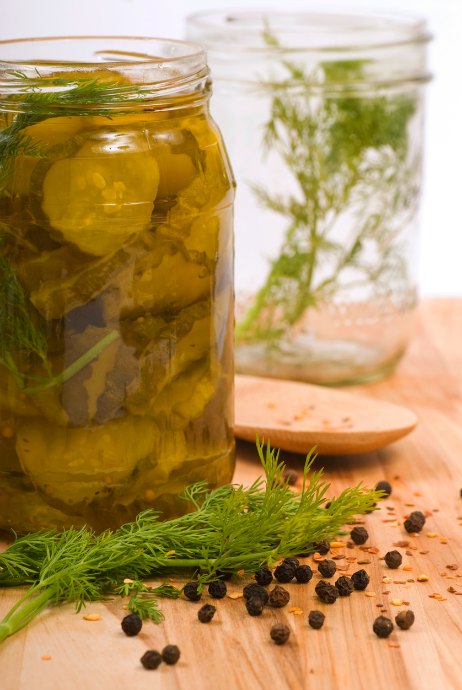How to Make Homemade Pickles
Posted by Julie on Jul 8th 2016
We've got the perfect summer weekend project for you to try, and the best news is that it won't take all weekend. In fact, you can make homemade pickles in a couple hours at most. Get ready to get creative with vegetables, spices and seasonings.
While Kirby cucumbers are the best type for pickling, you can pickle all sorts of firm vegetables. Try carrots, beets, cauliflower, jalapenos, okra and cabbage to start. The key to crunchy pickles is to choose the freshest produce you can find, with no soft or spoiled parts, and trim the ends and stems. If you buy cucumbers at the grocery store, look for ones with dull skins; these don't have a wax coating and will absorb the brine more easily.

You can use a chef's knife and cutting board to slice your vegetables into spears or chips. Chips will pickle faster than spears, but they are also more likely to lose their crunch sooner.
The brine that turns cucumbers into pickles requires equal parts water and vinegar, along with kosher salt, spices and seasonings. If you want to make classic dill pickles, you'll need dill seed rather than dill weed. Otherwise, you will probably already have all the various items you could use to season your pickles, like garlic, red and black pepper, and mustard and celery seed.
Refrigerator pickles are a snap: no need to sterilize the jars before filling them with spears and brine, and no need to boil afterward to seal them. Be sure to keep them in the refrigerator and finish them within a few weeks. If you can restrain yourself, wait a day or so before opening them so the flavors intensify.
If you want to process the pickles for shelf storage, do so with a water bath. Boil the jars and lids to sterilize first, make your pickles, and boil the sealed jars again for five minutes. Refer to the USDA Home Canning Guide for all the details on food preservation safety. Use a large stock pot you can fill with enough water to cover the jars completely. Watch the timer carefully; if you cook them longer than necessary, they'll start to lose crunch.
Ready to get started? If you want to strike out on your own, go for it. Otherwise, check out these recipes that we found.
Quick Homemade Pickles
These recipes from Cook's Illustrated make a variety of pickled vegetables, including cucumbers, carrots, fennel and cabbage. Because they use rice vinegar, they can't be processed for shelf storage. However, we bet these small batches will be eaten quickly.
Dill Sandwich Pickles
If you're ready to leap into preserving pickles for shelf storage, check out this recipe from Brown Eyed Baker. We love how much detail Michelle includes in her recipe steps, especially where it comes to canning safely. You may need to order some of the ingredients and canning supplies. But once you've got all the materials, you'll be amazed by how easy it is to preserve your own pickles.

